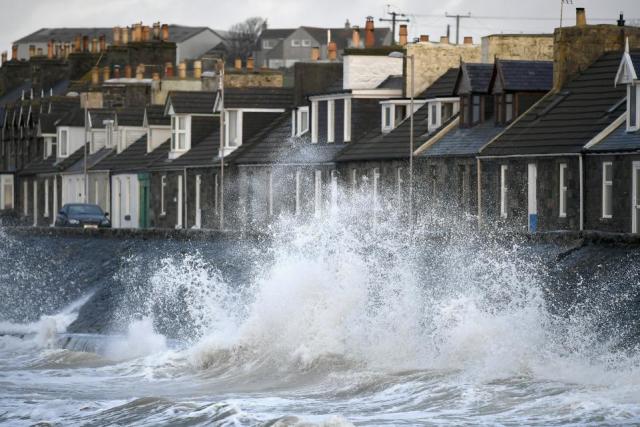Fox News
California girl, 12, dies from infection misdiagnosed as flu, family says
By Jennifer Earl, Fox News

Alyssa Alcaraz, 12, Visalia, California, died from a strep blood infection on Dec. 17 — just days after her parents say she was misdiagnosed with the flu. (Jeremy Alcaraz)
When Alyssa Alcarez was sent home from school after throwing up, her family thought she probably had a “bug” of some sort – maybe even a mild case of the flu.
The next day, Alcarez’s mother, Keila Lino, decided to take her daughter to a nearby urgent care, where doctors confirmed her suspicion: Alcarez had the flu.
“Stunning” breakthrough in brain health leaves doctors baffled.
Over the next four days, Alcarez’s health continued to deteriorate. She was fatigued, had no appetite and was having trouble breathing.
When medication, rest and fluids failed, Lino rushed her daughter to urgent care. A physician told Lino the seventh grader’s oxygen levels were low, and Alcarez was rushed to Kaweah Delta Medical Center in Visalia, California.

Alyssa Alcaraz, 12, died from a strep infection hours after she was taken to Kaweah Delta Medical Center in Visalia, Calif. (Jeremy Alcaraz)
“The doctor wanted to rule out meningitis, though she wasn’t complaining about her neck, he didn’t want to rule it,” Lino explained. “We were starting to do that procedure to test her fluid when she coded.”
The 12-year-old went into cardiac arrest, which, her parents say, was a result of septic shock from a strep infection in her blood – an infection she had no idea her daughter was suffering from. Within hours, Alcarez was dead.
It wasn’t until days after her daughter died, on Dec. 17, that Lino learned the cause of her death.
“A couple days after she passed, we got a call from the lab at the funeral home,” Lino said. “We were shocked by it. Doctors said it was the flu, but it was a bacteria infection due to strep that shut down [her] organs all within three days.”
With the nation suffering from an unusually severe flu season, Lino says she isn’t surprised her daughter was misdiagnosed with the flu.
“We don’t want revenge. We want changes. We want something positive out of this.”
The flu is now widespread in 46 states, according to the latest report from the Centers for Disease Control and Prevention (CDC). California is being hit particularly hard. State health officials say at least 27 people younger than 65 have died of the flu in the state since October.
“I know right now with the flu season clinics, hospitals, everyone is just busy and assuming that’s what everyone has,” Lino said. “But it’s more than that. In order for us to know, with simple blood work, it could have been caught. Something so simple.”
Lino, a mother of four, said she’s sharing her daughter’s story as a warning to other parents, encouraging them to push doctors to do further testing.
“We want to do something on her behalf and make a change in some way,” Lino said. “It’s not fair. We know it’s not fair. We don’t want revenge. We want changes. We want something positive out of this.”
Alcarez’s father, Jeremy, agreed – and thanked the dozens of people who have showed support for the family since Alcarez’s unexpected death. Nearly 200 people raised $12,350 via GoFundMe to help cover funeral expenses.
“She loved to sing. She was a smart girl, beautiful,” Jeremy said. “It was awesome. She had a beautiful funeral.”

 WASHINGTON, DC – OCTOBER 16: U.S. Secretary of Energy Rick Perry speaks at the Energy Policy Summit at the National Press Club, October 16, 2017 in… Drew Angerer
WASHINGTON, DC – OCTOBER 16: U.S. Secretary of Energy Rick Perry speaks at the Energy Policy Summit at the National Press Club, October 16, 2017 in… Drew Angerer While most offshore wind farms are located close to the coast, an ambitious plan by a Dutch energy firm involves the creation of what would be the world’s biggest wind farm featuring a central man-made island as the power hub. TenneT
While most offshore wind farms are located close to the coast, an ambitious plan by a Dutch energy firm involves the creation of what would be the world’s biggest wind farm featuring a central man-made island as the power hub. TenneT The wind farm could provide power to the Netherlands, U.K., Norway, Denmark, Germany, and Belgium. TenneT
The wind farm could provide power to the Netherlands, U.K., Norway, Denmark, Germany, and Belgium. TenneT The Polar Pioneer oil drilling rig arrives aboard a transport ship, following a journey across the Pacific, in view of the Olympic Mountains in Port Angeles, Wash. on April 17, 2015. Photo by Daniella Beccaria/seattlepi.com/File/AP
The Polar Pioneer oil drilling rig arrives aboard a transport ship, following a journey across the Pacific, in view of the Olympic Mountains in Port Angeles, Wash. on April 17, 2015. Photo by Daniella Beccaria/seattlepi.com/File/AP
 Rising sea levels will be especially dangerous for coastal towns and cities. Jeff J Mitchell/Getty Images
Rising sea levels will be especially dangerous for coastal towns and cities. Jeff J Mitchell/Getty Images